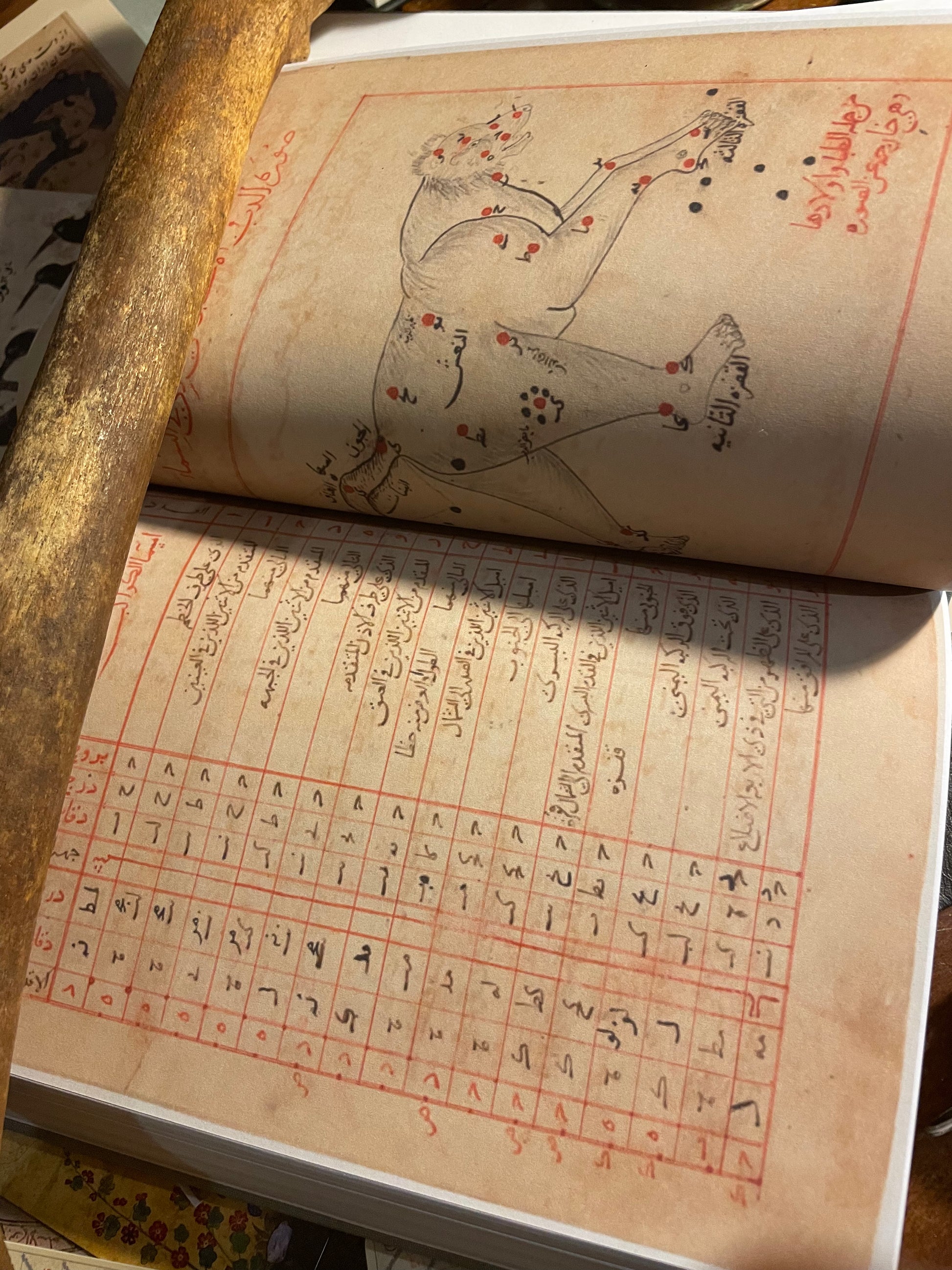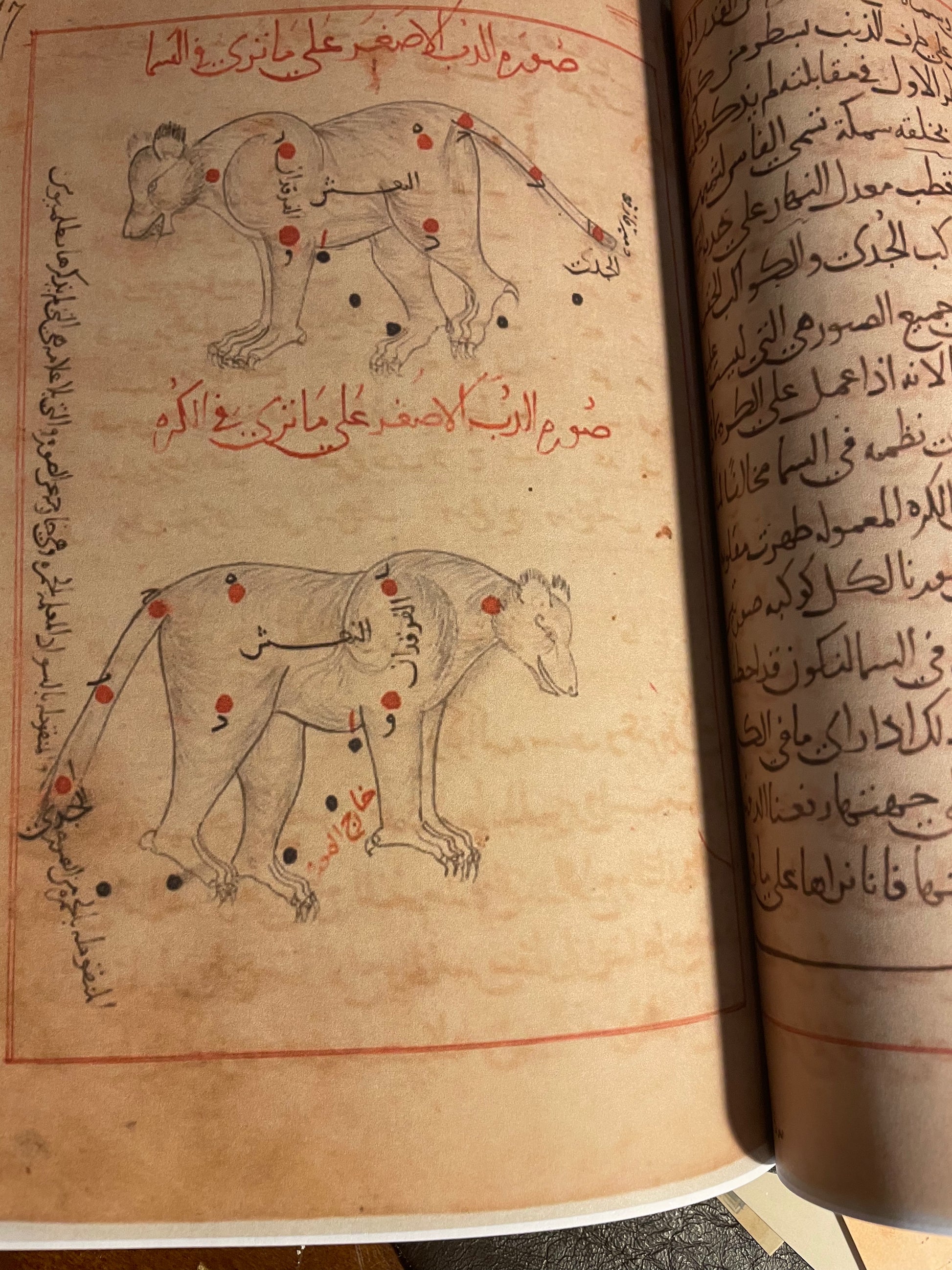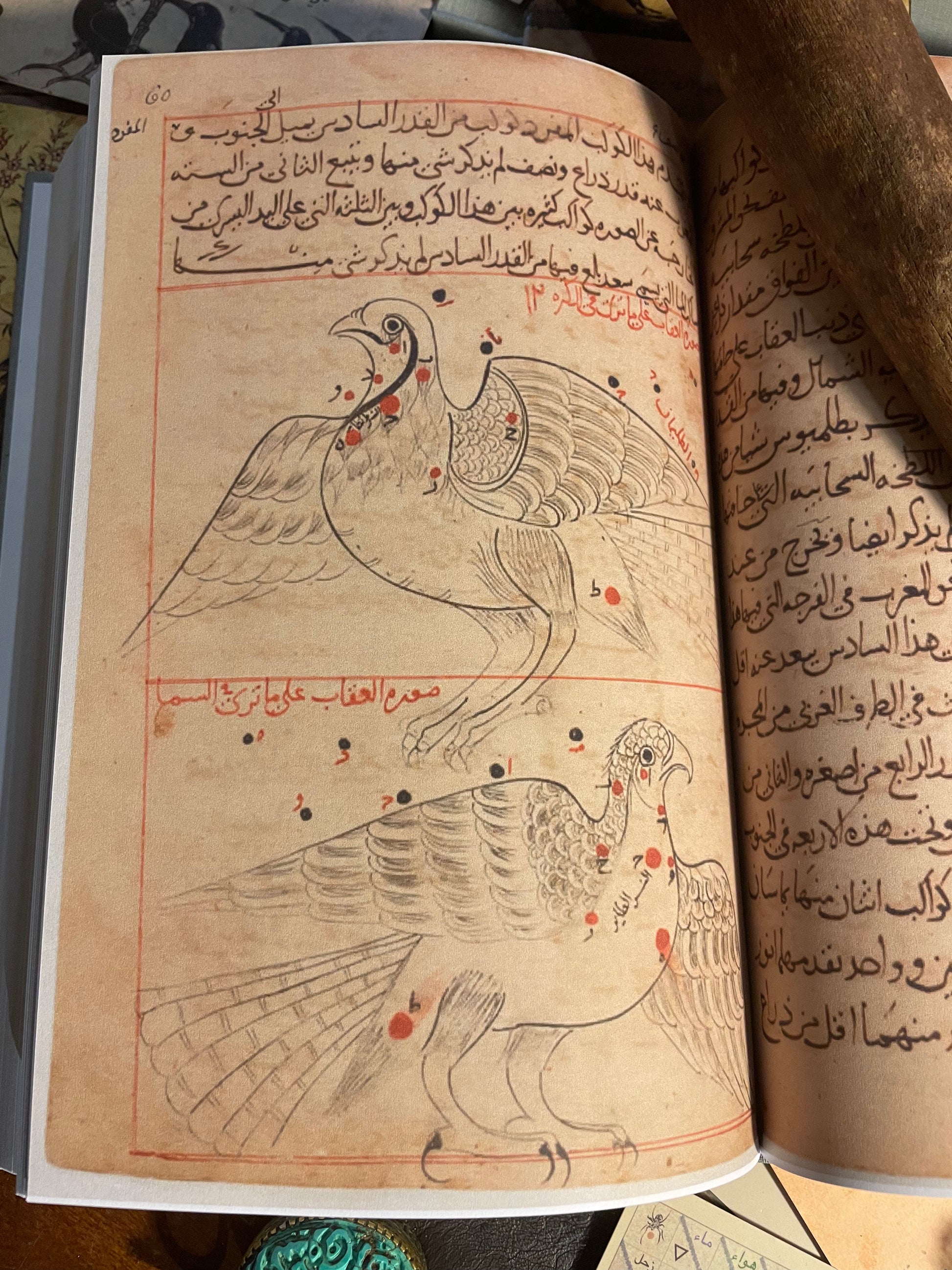Sufic Sorcery
صور الكواكب Planetary Images
Couldn't load pickup availability
This tittle is on back order:
A Faithful reproduction of the Original Arabic Manuscript. Some manuscripts may have blur, missing pages or black spots.
Tan Linen wrap Hardcover with gold spine embossing, colored and illustrated 488 pages rare manuscript.
Al Sufi's important Astronomical work 'Planetary Images' صور الكواكب aka as the book of fixed stars
'Abd al-Rahman al-Sufi (Persian: عبدالرحمن صوفی (December 7, 903 – May 25, 986) was a Persian[1][2][3] astronomer also known as 'Abd ar-Rahman as-Sufi, 'Abd al-Rahman Abu al-Husayn, 'Abdul Rahman Sufi, or 'Abdurrahman Sufi and, historically, in the West as Azophi, Azophi Arabus,[2] and Albuhassin.[4] Al-Sufi published his famous Book of Fixed Stars in 964, which included both textual descriptions and pictures. Al-Biruni reports that his work on the ecliptic was carried out in Shiraz. He lived at the Buyid court in Isfahan.
Al-Sufi published Kitab al-Kawatib al-Thabit al-Musawwar (also commonly known as the Book of Fixed Stars) in 964 and dedicated it to Adud al-Dawla, the ruler of Buwayhid at the time.[9] This book describes forty-eight constellations and the stars that are part of those constellations.
Within the Book of Fixed Stars, Al-Sufi compared Greek and Arabic constellations and stars linking those there were the same in both texts.[12] He included two illustrations of each constellation, one showing the orientation of the stars from the perspective outside the celestial globe and the other from the perspective of looking at the sky while standing on the earth. He separated the constellations into three groups: twenty-one northern constellations, twelve zodiac constellations, and fifteen southern constellations. For each of these forty-eight constellations, Al-Sufi provided a star chart that contains all of the stars that form the constellation. Each star chart comprised names and numbers of the individual stars in the constellation, and provided their longitudinal and latitudinal coordinates, the magnitude or brightness of each star, and its location north or south of the ecliptic.[9]
Although the magnitude was given for each star, of the 35 remaining copies of the Book of Fixed Stars[13] the star magnitudes are not consistently the same number for each star due to scribing errors.[14] Al-Sufi organized the stars in each of his drawings into two groups: the stars that form the image that the constellation is meant to depict, and the stars that are in close proximity to the constellation but do not contribute to the overall image. He identified and described stars not included by Ptolemy, but he did not include them in his star charts. Al-Sufi states at the beginning of the Book of Fixed Stars that his charts are modeled after those that were produced by Ptolemy, so Al-Sufi left the stars excluded in Ptolemy's charts out of his charts as well.[9]
Ptolemy had published the Almagest 839 years earlier than Al-Sufi, so the longitudinal placement of the stars within constellations had changed overt that time. To account for the procession of the stars, Al-Sufi added 12° 42' to the longitudes Ptolemy had previously suggested for the placement of the stars.[15] Al-Sufi differed in Ptolemy by having a three level scale to measure the magnitude of stars instead of a two level scale. This extra level increased the accuracy of his measurements. His methodology for determining these magnitude measurements cannot be found in any of his remaining texts.[6]
Despite the importance of the Book of Fixed Stars in the history of astronomy, it took more than a thousand years until the first English translation was published in 2010.[16]
Al-Sufi observed that the ecliptic plane is inclined with respect to the celestial equator and quite accurately calculated the length of the tropical year.[citation needed]
Al-Sufi also wrote about the astrolabe, finding numerous additional uses for it: he described over 1000 different uses, in areas as diverse as astronomy, astrology, horoscopes, navigation, surveying, timekeeping, Qibla and Salat prayer.[17]
Al-Sufi's astronomical work was subsequently used by many other astronomers, including Ulugh Beg who was both a prince and astronomer.[9]
1 Copy available
صور الكواكب الثمانية والأربعين أو صُوَرُ الكَوَاكِبِ الثَّابِتَةِ هو كتاب في علم الفلك وضعه عبد الرحمن بن عمر الصوفي في القرن الرابع الهجري(القرن العاشر الميلادي)، وتابعه بعد ذلك ابنه الذي صنف أرجوزة لتسهيل حفظ الكوكبة وما بها من كواكب.[1] يتحدث فيه مصنفه عن الكوكبات التي ترى في السماء، ويستدل بها الفلكيون في أرصادهم والبحارة في سفرهم. ويتحدث الكتاب عن الكوكبات التي تخيلها العرب القدماء والتي بلغ عددها 48 كوكبة، ويَصف أغلب الكتاب مواقع النجوم في الكوكبات ومقدار لمعانها
يحوي الكتاب صوراً رسمها الصوفي لكل الكوكبات بالأشكال التي تخيلها العرب القدماء فيها، حيث يُبين موضع كل نجم في الأشكال المُتخيلة للكوكبات. وقد رسم الصوفي رسمين لكل كوكبة، حيث يُبينها الأول كما تُرى في السماء والثاني كما تُرى في الكرة السماوية (كرة تُرسم عليها كوكبات السماء كانت تُستخدم قديماً). وذلك لأن الكوكبات تكون معكوسة في الكرة، فرسمها الصوفي بالشكلين لعدم التضليل ولاستخدام الرسم الأول عند رصد الكوكبات في السماء والثاني عند استخدام الكرة لذلك.
| الكواكب الشمالية | البروج الأثني عشر | الكواكب الجنوبية |
|---|---|---|
| الدب الأصغر | الحمل | قيطس |
| الدب الأكبر | الثور | الجبار |
| التنين | التوأمان | النهر |
| قيقاوس | السرطان | الأرنب |
| العواء | الأسد | الكلب الأكبر |
| الإكليل الشمالي | العذراء | الكلب الأصغر |
| الجاثي على ركبته | الميزان | السفينة |
| اللورا | العقرب | الشجاع |
| الطائر | الرامي | الباطية |
| ذات الكرسي | الجدي | الغراب |
| برشاوش | الدلو | قنطورس |
| ممسك الأعنة | السمكتان | السبع |
| الحواء والحية | المجمرة | |
| السهم | الإكليل الجنوبي | |
| العقاب | الحوت الجنوبي | |
| الدلفين | ||
| الفرس الأعظم | ||
| قطعة الفرس | ||
| المرأة المسلسلة | ||
| المثلث |
Materials
Materials
Dimensions
Dimensions
Care information
Care information

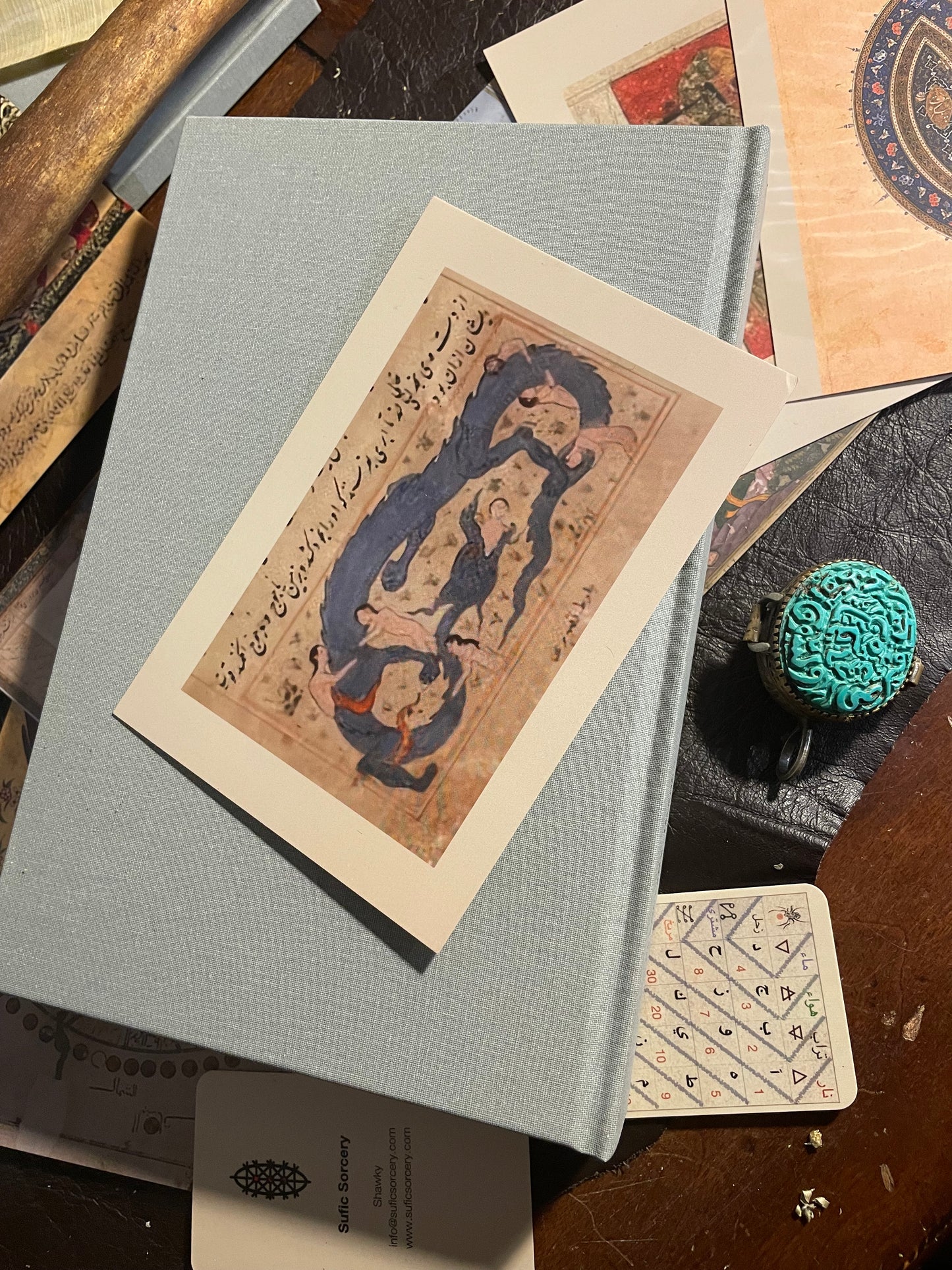





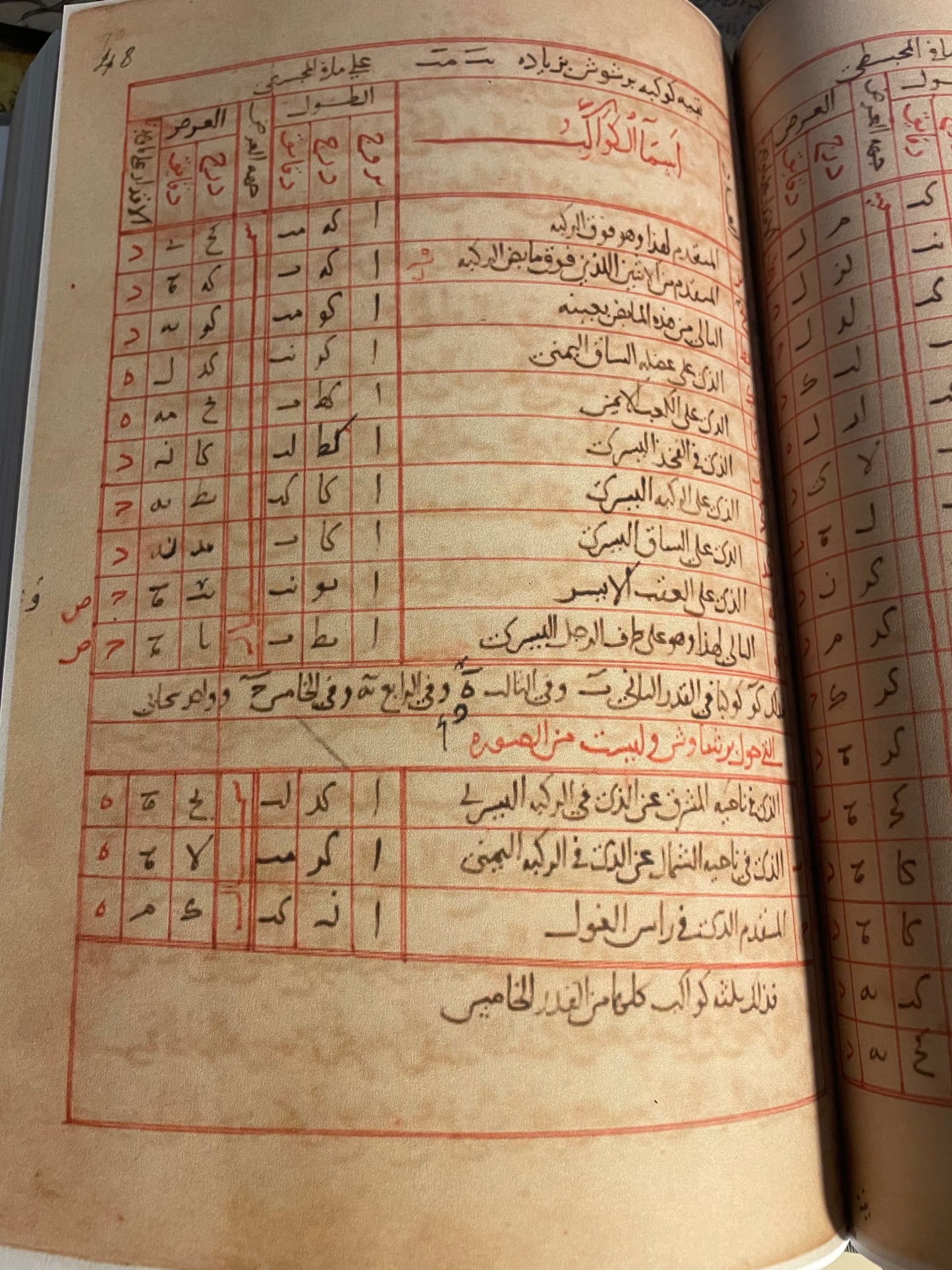

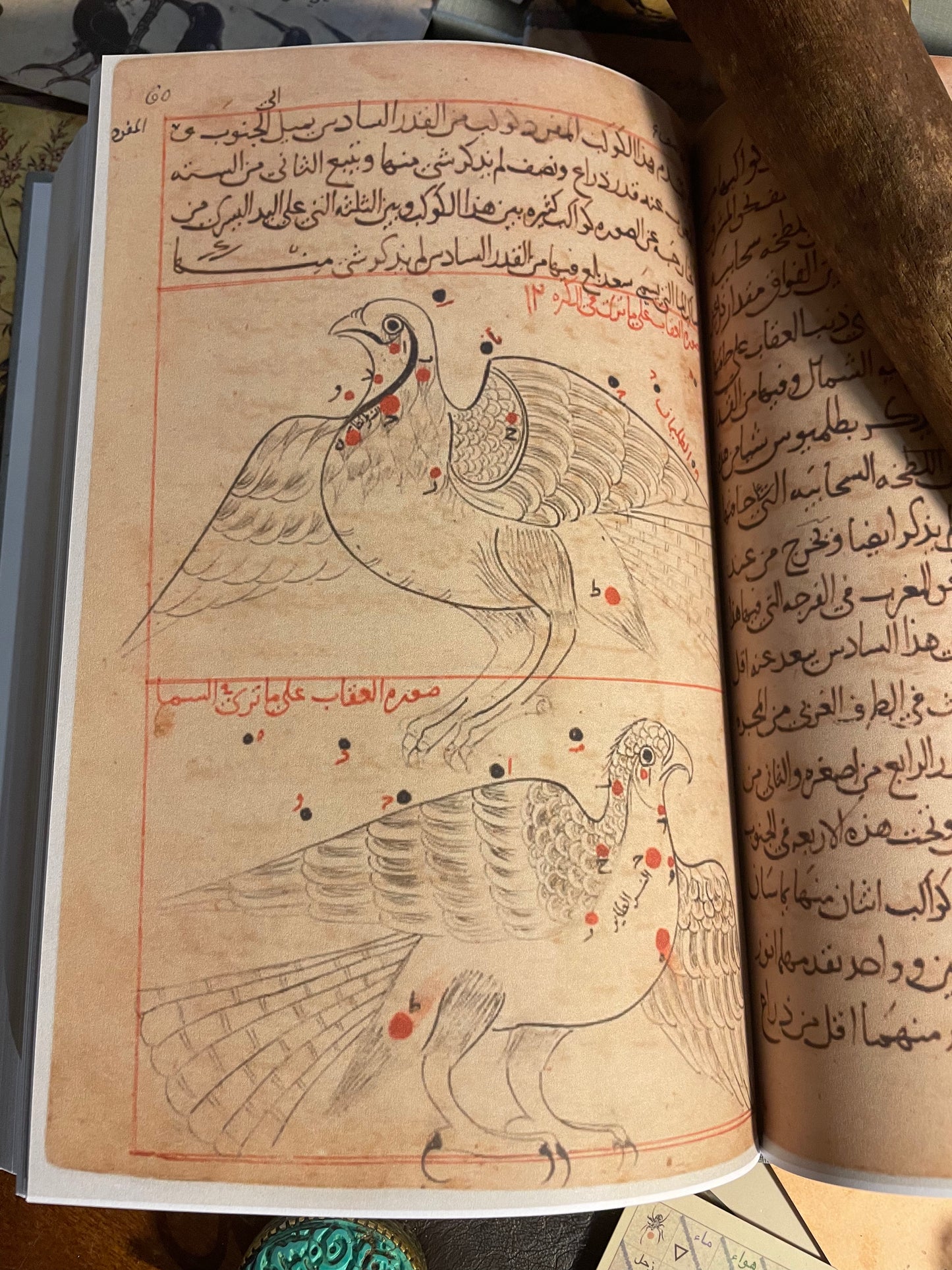



Image with text
Pair text with an image to focus on your chosen product, collection, or blog post. Add details on availability, style, or even provide a review.





